Cause of death Heart disease Name Kid Cann Criminal status Deceased | Occupation Mobster | |
 | ||
Born September 8, 1900 ( 1900-09-08 ) Ramnicu Sarat, Romania Died June 21, 1981, Minneapolis, Minnesota, United States | ||
Other names Kid Cann, Dr. Ferguson | ||
Kid cann so high
Isadore Blumenfeld (September 8, 1900 – June 21, 1981), commonly known as Kid Cann, was a Jewish-American organized crime figure based in Minneapolis, Minnesota, for over four decades and remains the most notorious mobster in the history of Minnesota. The power and influence he held in Minneapolis were often compared to that of Al Capone in Chicago and were associated with several high-profile crimes in the city's history, including his alleged involvement in the 1924 murder of cab driver Charles Goldberg, the attempted murder of police officer James H. Trepanier, and the December 1935 killing of newspaperman Walter Liggett. He is also thought to have participated in the fraudulent dismantling of the Twin City Rapid Transit street railway during the early 1950s.
Contents
- Kid cann so high
- Early life
- Prohibition
- Heyday
- The Liggett murder
- Notoriety
- Conviction and imprisonment
- Later years and death
- Folklore
- References
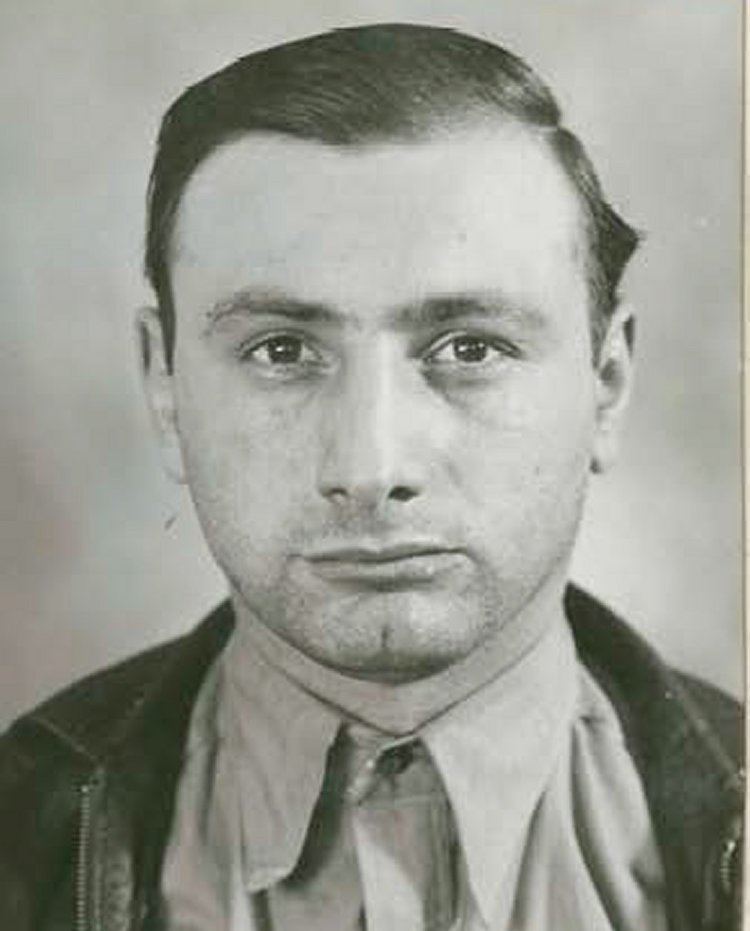
Blumenfeld was convicted of violating the federal Mann Act in 1959 and, after a short prison term, retired to Miami Beach, Florida, where he and Meyer Lansky operated a real estate empire. He was involved in organized crime in Miami Beach and Havana, Cuba, until his death.
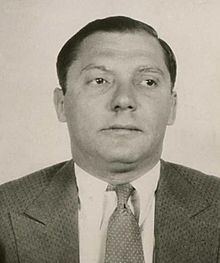
Early life
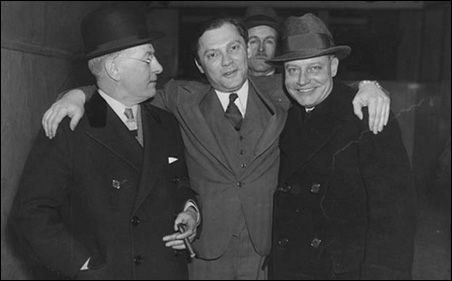
Blumenfeld was born in 1900 in the Romanian shtetl of Râmnicu Sărat, Buzău County, to a Jewish family. According to the U.S. Immigration and Naturalization Service documents, his parents emigrated to America in 1902 via the port of Duluth, Minnesota. His father, a furrier, settled the family in the neighborhood of Near North, Minneapolis. During childhood, Isadore had to leave school and support his family by selling newspapers on Minneapolis' "Newspaper Row." At the time, the best selling locations had to be held by force against gangs of other boys. Kid Cann would also tell stories of how he had made extra money picking up bus tokens and reselling them. Enraged by the poverty of his family, he turned to running errands for the pimps and madams of Minneapolis's red light district.
Prohibition
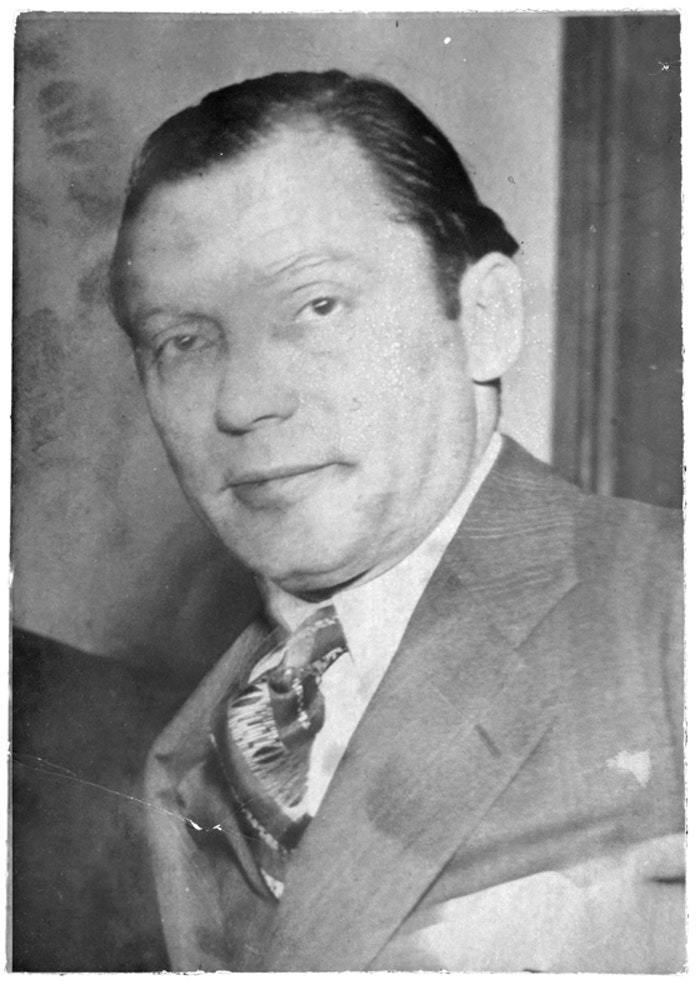
With the onset of Prohibition, Kid Cann and his brothers were transformed from small-time hoods into major figures in the American Mafia. His ties to the Chicago Outfit and New York's Genovese crime family date back to the Prohibition period.
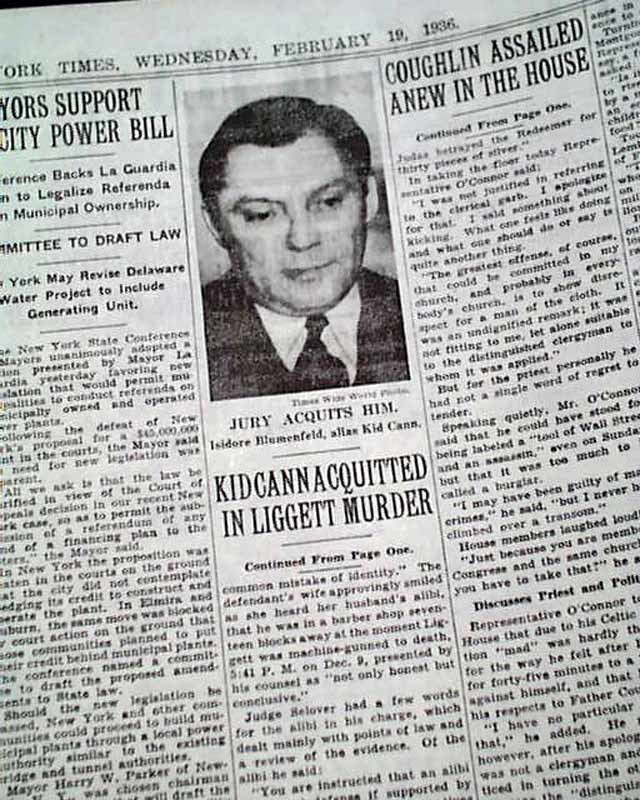
According to a later trial, they would legally import industrial grade alcohol from Canada, ostensibly for their perfume factory, and divert it to their illegal distilleries in the forests near Fort Snelling. Also, according to the book Minnesota 13, Kid Cann and his brothers made frequent trips to Stearns County, Minnesota to purchase the area's legendary moonshine from local farmers. Some was disposed of in the Twin Cities, but most of it was sold to the Chicago Outfit, which was then bossed by Al Capone. The same book also alleges that the Blumenfelds owned a lakeside cabin near Melrose, Minnesota.
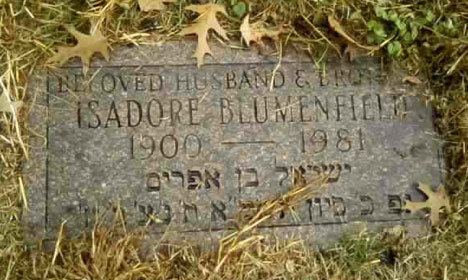
By his 20's, Blumenfeld and his brothers, Harry Bloom and Yiddy Bloom (their family name had been changed by this time), held considerable power over the Jewish neighborhoods in North Minneapolis and oversaw illegal activities such as bootlegging, prostitution, and labor racketeering. According to Twin Cities crime reporter Paul Maccabee, Kid Cann's rivalry with Minneapolis's Irish Mob ended after he and Irish Mob boss Tommy Banks divided their territories with a handshake.
Heyday
A number of deaths are attributed to Blumenfeld and his gang, including journalists who were killed after writing articles exposing the inner workings of his organization as well as his ties to corrupt politicians from several parties. A Jewish restaurant owner who recalls this era once said that the Blumenfelds were worshipped by several generations of neighborhood boys.
There was a high degree of political and civil corruption in the region in the 1920s and 1930s. The mainstream newspapers hardly mentioned what was going on, as any outlet that published articles critical of the status quo was threatened. Some small tabloid newspapers attempted to report what was going on, but reporters and editors quickly became targets. Howard Guilford of the Twin City Reporter was shot and killed on September 6, 1934. A decade later the paper lost another reporter when Arthur Kasherman was killed on January 22, 1945.
The Liggett murder
The most notorious murder was that of Walter Liggett, the founder and editor of a weekly paper called The Midwest American. He had been threatened and offered bribes to stay quiet, but he persisted in reporting on links he found between organized crime figures and Minnesota's ruling Farmer-Labor Party. Liggett was beaten up, prosecuted for a non-existent rape incident, and finally died after being machine gunned in the alley behind his home on December 9, 1935. His wife and daughter witnessed the assassination as did several neighbors. All identified Kid Cann as the shooter. Kid Cann was indicted by a grand jury, but poor investigative work and a careless trial meant that he was acquitted. Liggett's widow would always believe that Minnesota Governor Floyd Olson was deeply implicated in the murder. Her husband had repeatedly accused the governor of corruption.
Notoriety
Blumenfeld was indicted for the killing of taxicab driver Charles Goldberg, and was also suspected of being responsible for the attempted murder of police officer James H. Trepanier at the Cotton Club in Minneapolis. Paul Maccabbee, however, writes that Kid Cann, while present, had no part of the shooting, which was likely committed by fugitive bank robber Verne Miller.
As the area streetcar system, operated by Twin City Rapid Transit, was being dismantled in the early 1950s and replaced with diesel buses, Blumenfeld owned a 16% stake in the company. He was accused of allying himself with a corporate raider, using force to intimidate stockholders, and disposing of the scrap metal on the black market after their hostile takeover had succeeded. Some historians believe he held considerable responsibility for what happened, but when a federal court case years later led several executives from the company to go to prison, Blumenfeld was not convicted. What remained of Twin City Rapid Transit was taken over at the behest of Governor Orville Freeman by noted Minneapolitan Carl Pohlad in 1960.
Conviction and imprisonment
In 1959, he was convicted on federal charges of transporting a Chicago prostitute named Virginia Tollefson across state lines (see Mann Act). Although this conviction was later overturned on appeal, he was again tried and convicted of jury tampering and extorting kickbacks from bars and nightclubs throughout Minneapolis. The extortion was carried out by threatening to deny them liquor licenses. During the sentencing phase of this trial, it was revealed that Kid Cann was receiving a cut of the money skimmed from at least one Las Vegas casino.
Later years and death
After his release from prison, he moved to Miami Beach, Florida with his friend Meyer Lansky. They reportedly continued to make money through illegal activities, though they changed tack, focusing instead on stock market fraud, money laundering, and questionable real estate dealings. He frequently visited his family and friends in Minnesota and declared to a Minneapolis reporter in 1976 that he had recently turned down an offer to write his memoirs. He said, "I have nothing to say, really." He died in Minneapolis' Mt. Sinai Hospital of heart disease in the summer of 1981. Rabbi Max Shapiro of Temple Israel recited the graveside services when Kid Cann was interred at the Adath Yeshurun Cemetery in Edina, Minnesota.
Rabbi Shapiro later recalled,
"After Kid Cann's funeral, I received a call from someone who asked how could I possibly officiate at the funeral of such a terrible human being? And I answered, it's my belief that every Jew at death, no matter what he did in life, deserves to have the Mourners Kaddish – the last prayer – said for him. So I said Kaddish for Kid Cann."
Folklore
In Minnesota today, tales of Kid Cann and his rumored dark deeds may be considered to have made him a local urban legend, similar to Al Capone or Whitey Bulger.
Two tales are told of the origins of his famous nickname. According to one legend, he picked up the name during a brief attempt at boxing. Another story told by his fellow North Side Jews alleges that young Isadore Blumenfeld would always lock himself in the outhouse (that is, the "can") to avoid gang fights in the neighborhood. Kid Cann indignantly denied both versions.
In later years, he was alleged to have installed bulletproof windows on his suburban house and to have been able to fix any problem with a single phone call. During his lifetime, Kid Cann bore a love–hate relationship with his legend, on one hand glorying in the attention and also feeling infuriated by the increased Federal Bureau of Investigation surveillance that it brought him beginning in the early 1950s. In a 1976 interview, he snapped, "Ninety percent of what was written about me is b--- s---!"
